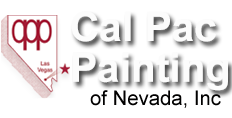Controlled chaos and business-as-usual appear to be the prevailing sentiments among industry experts when discussing the much-anticipated opening day of the public health care exchanges.
“When you implement large technology, things aren’t perfect on day one,” says John Kelly, principal business adviser with Edifecs, an exchange technology provider. “The fact that the requirements that the feds are spitting out were coming in almost in real-time as people were designing and building [the exchanges]… there’s a lot that is going to be bare bones about the initial go-live.”
Many also believe the public exchange launch will, for now, have little effect on employer-sponsored health care coverage. “I don’t think [employers] are losing sleep over it right now,” says Don Garlitz, executive director of exchange solutions for bSwift, the technology vendor behind Vermont’s SHOP exchange. “My sense is that they’re in a little bit of … wait-and-see mode.”
Karen McLeese, vice president of regulatory affairs at CBIZ Benefits & Insurance Services concurs. “Initially, there won’t likely be significant impact on employer-provided coverage,” she says. “Employers that have offered coverage will continue to offer coverage, at least for the near term, and maybe for the longer term.”
Nevertheless, the public exchanges have brought several issues to the forefront for employers and brokers alike and they are bracing for challenges over the coming months. As the public exchange launch commences, here’s what we know for sure:
Marketplace notices
By Oct. 1, employers are to have provided employees with written notice about the public exchanges and employees’ potential eligibility for federal subsidies. While the U.S. Department of Labor says employers won’t be fined for not providing these, McLeese advises caution. “There still could be some arguments that employees weren’t given – not even from an Affordable Care Act point of view, but maybe from an ERISA point of view – all the accurate information that they needed,” she says.
She maintains employers should make certain that all information contained in the marketplace notice is accurate and that they “don’t bind themselves to something that they may change in the future.”
Conversely, she says, once an employer does know with certainty what the plan design is going to look like next year — whether it will meet minimum value and affordability standards — that information should be communicated.
Steve Wojcik, vice president of public policy with the National Business Group on Health, says large employers are concerned about the communication aspect of the public exchanges, “especially since they know that they’re offering coverage that disqualifies their employees from any kind of federal assistance or coverage on the exchange.”
The launch of the public exchanges presents an opportunity for employers to reinforce the value of the benefits they’re offering employees, says Mike Thompson, principal and NY-metro health care practice leader for PricewaterhouseCoopers’ human resource services practice. Still, the DOL’s model exchange notice is simply “the minimum requirement, not probably what [employers] needed to do … more importantly, [employers] need to customize the communications around how their specific employees are impacted,” he says.
Chuck Mune, MBA, RHU
One America Plaza
600 West Broadway, Suite 600
San Diego, CA 92101
Ph: (619) 230-8090
Fax: (619) 687-0800
Email: chuck.mune@nmfn.com
CA LIC#0730213
www.sandiego.strategicebs.com



